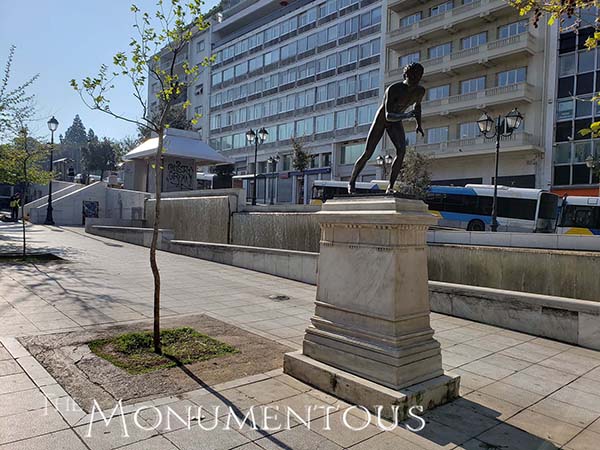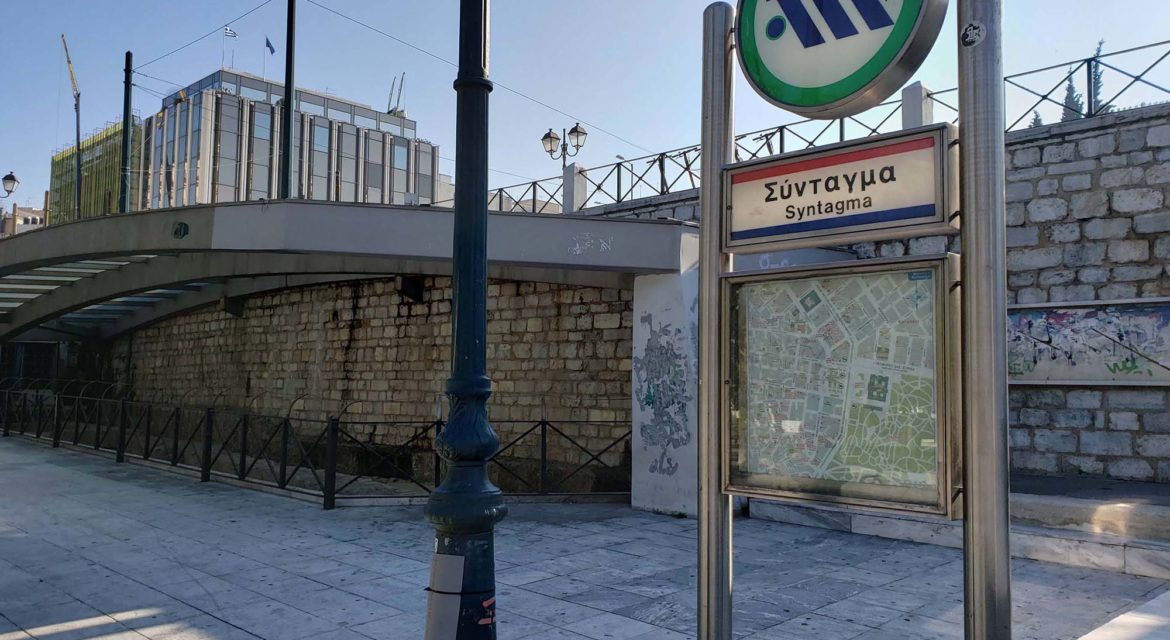 As one of the most important modern areas in the city of Athens, Syntagma Square has become a hub of activity for the capital of Greece. Buses, trolleys, trams, and the metro all stop in Syntagma Square, while sitting in the shadow of the Greek Parliament building and the Tomb of the Unknown Soldier helps it to attract crowds all year round. The surrounding five-star hotels and shops further bolster this historical and cultural significance, but the fact that Syntagma Square’s most recognizable landmark is a nondescript fountain underscores the monumentous potential that it contains.
As one of the most important modern areas in the city of Athens, Syntagma Square has become a hub of activity for the capital of Greece. Buses, trolleys, trams, and the metro all stop in Syntagma Square, while sitting in the shadow of the Greek Parliament building and the Tomb of the Unknown Soldier helps it to attract crowds all year round. The surrounding five-star hotels and shops further bolster this historical and cultural significance, but the fact that Syntagma Square’s most recognizable landmark is a nondescript fountain underscores the monumentous potential that it contains.

From Palace Square to Syntagma Square
Designed and constructed in the early 19th century, the Square was originally known as Palace Square since it resided beneath King Otto’s Royal Palace. Along with Omonoia Square, it was designed to be one of the two central squares of modern Athens that became the capital of the newly created Greek state in 1834.
 In 1843, a popular and military uprising forced King Otto to grant a constitution to the people of Greece, which caused the square to be renamed Syntagma Square (Constitution Square). It was Queen Amalia who commanded the construction of the fountain in Syntagma Square that remains the central feature of the area.
In 1843, a popular and military uprising forced King Otto to grant a constitution to the people of Greece, which caused the square to be renamed Syntagma Square (Constitution Square). It was Queen Amalia who commanded the construction of the fountain in Syntagma Square that remains the central feature of the area.
Since then, nearly every major event in Greece has been celebrated or mourned at Syntagma Square. In 1974, when the country’s Military Junta government was overthrown, the new leader of Greece gave his first speech in Syntagma Square. In 2010-2012 it was the center of protests against austerity measures that were implemented as a result of Greece’s debt crisis and continues to serve as a destination for tourists and meeting place for residents.
This history and significance is part of what makes Syntagma Square such a notable location, although it has become a hub of activity for Athens for a variety of reasons.

A Central Hub of Activity
 Syntagma Square is located near many of Athens’ oldest and most famous attractions, including the Acropolis of Athens, neighborhoods like Plaka and various ruins of the ancient city, including the Temple of Olympian Zeus and the ancient Agora. The train station also features an archeological display that highlights numerous eras and artifacts.
Syntagma Square is located near many of Athens’ oldest and most famous attractions, including the Acropolis of Athens, neighborhoods like Plaka and various ruins of the ancient city, including the Temple of Olympian Zeus and the ancient Agora. The train station also features an archeological display that highlights numerous eras and artifacts.
The Tomb of the Unknown Soldier is the closest landmark to the Square though. It commemorates all of the Greek soldiers who died during wars, as well the soldiers who died during the Second World War and the Korean War. Guarded by the evzones, tourists often gather at the top of Syntagma Square to watch the official changing of the guards. These crowds have numerous options in terms of places to go after the ceremony is completed, since Syntagma Square is the starting point of Ermou Street, one of the most important shopping sections in Athens. Various tourists busses also use the square as their location to pick people up and drop them off.
During the Christmas season the square is decordated with lights and full of Santas with miniature ponies. Syntagma has also been the scene of the massive political rallies of New Democracy, PASOK and the KKE political parties as well as concerts and festivals. One of the biggest was a New Year’s Eve Concert that featured some of Greece’s most popular performers.
 Squares that attract this kind of activity are located across the world, but the fact that Syntagma Square does not have a central monument like many of these other locations is notable. Unlike Freedom Square in Budapest or even the Santa Fe Plaza in New Mexico, Syntagma Square’s central features are a non-descript fountain along with small sculptures located on both sides of the square. These pieces are not monuments in any sense, and their limitations are especially evident when compared to the grandeur and impact that true monuments can create economically and culturally when they’re an inherent part of such a location.
Squares that attract this kind of activity are located across the world, but the fact that Syntagma Square does not have a central monument like many of these other locations is notable. Unlike Freedom Square in Budapest or even the Santa Fe Plaza in New Mexico, Syntagma Square’s central features are a non-descript fountain along with small sculptures located on both sides of the square. These pieces are not monuments in any sense, and their limitations are especially evident when compared to the grandeur and impact that true monuments can create economically and culturally when they’re an inherent part of such a location.

Potential to Create a Modern Icon of Greece
 Given the historical, cultural and economic significance that Syntagma Square already possesses, a monument that could become an icon for Greece could easily be erected in the space. Doing so would provide the city and county with a symbol that would fit alongside the countless depictions of the Parthenon and Owl of Athena, which will never be displaced as symbols of the city, but represent a modern icon that signifies a new era for Athens and for Greece.
Given the historical, cultural and economic significance that Syntagma Square already possesses, a monument that could become an icon for Greece could easily be erected in the space. Doing so would provide the city and county with a symbol that would fit alongside the countless depictions of the Parthenon and Owl of Athena, which will never be displaced as symbols of the city, but represent a modern icon that signifies a new era for Athens and for Greece.

